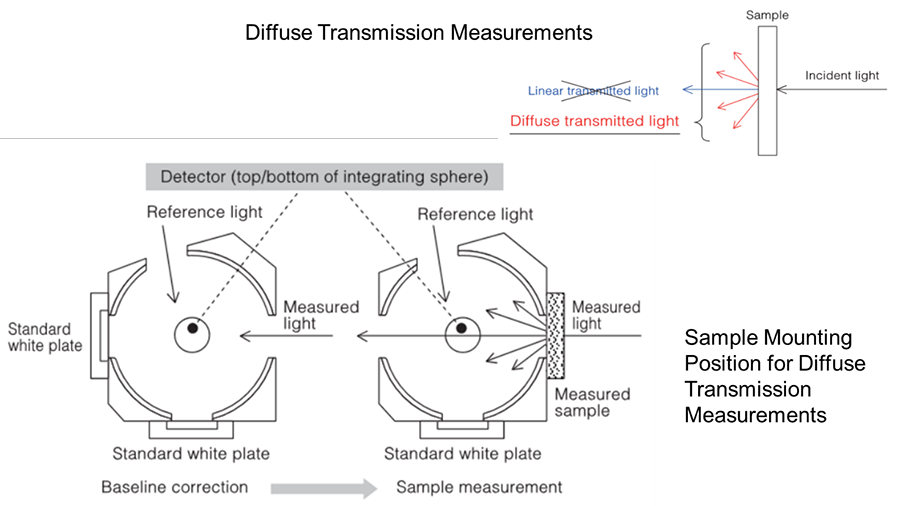How does an integrating sphere make a diffuse transmission measurement?

Diffuse transmission measurements measure the part of the transmitted light that is scattered and does not pass straight through the sample. The top right figure shows a schematic view of the measurement. The linear transmitted light is not allowed to enter the detector during these measurements. Diffuse transmission measurements are commonly used to evaluate the scattering performance of translucent film. They are also used for haze (cloudiness) measurements. However, a special integrating sphere attachment is required to perform haze measurements according to several standards, which strictly define the beam size, aperture ratio, and aperture size of the integrating sphere.
As in the case of total transmission measurements, an integrating sphere attachment is used for diffuse transmission measurements. But it is used slightly differently. To measure an actual sample, install the integrating sphere in the instrument and perform baseline correction. At this time, mount standard white plates at the prescribed positions. Baseline correction generally involves measurements on air with no sample mounted. Next, mount the sample and perform measurements with the standard white plate on the opposite side of the integrating sphere. (In some cases, a light trap is mounted at the position where the standard white plate was removed.) This allows the linear transmitted light to exit the integrating sphere, such that the integrating sphere captures only the diffuse light. The bottom figure shows the sample mounting position, viewed from directly above the integrating sphere.


